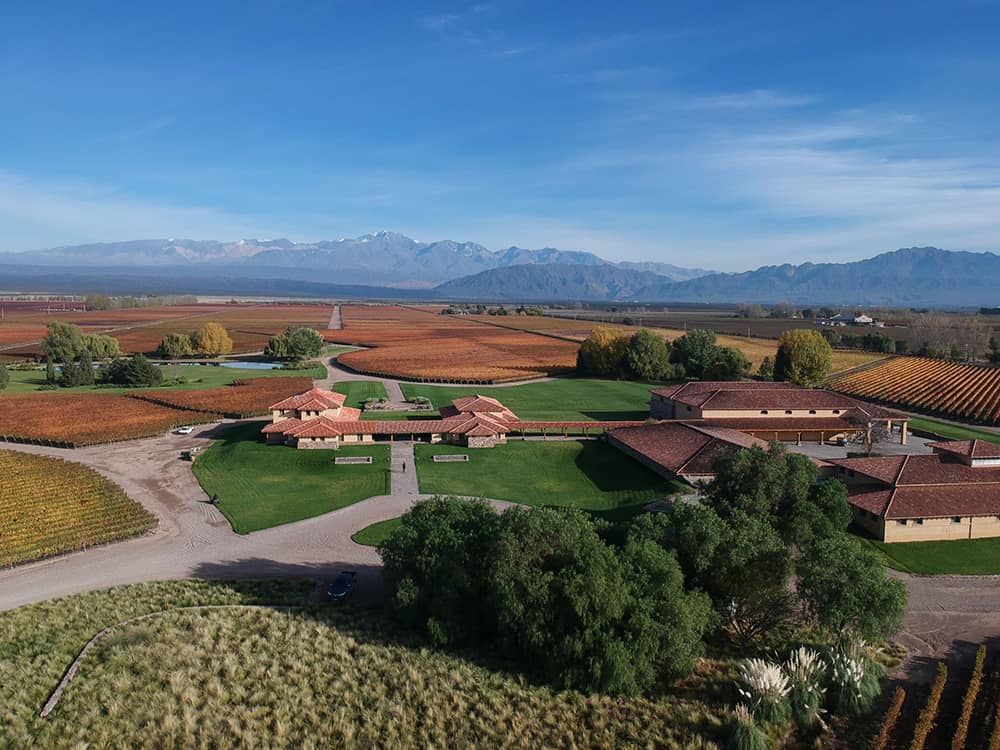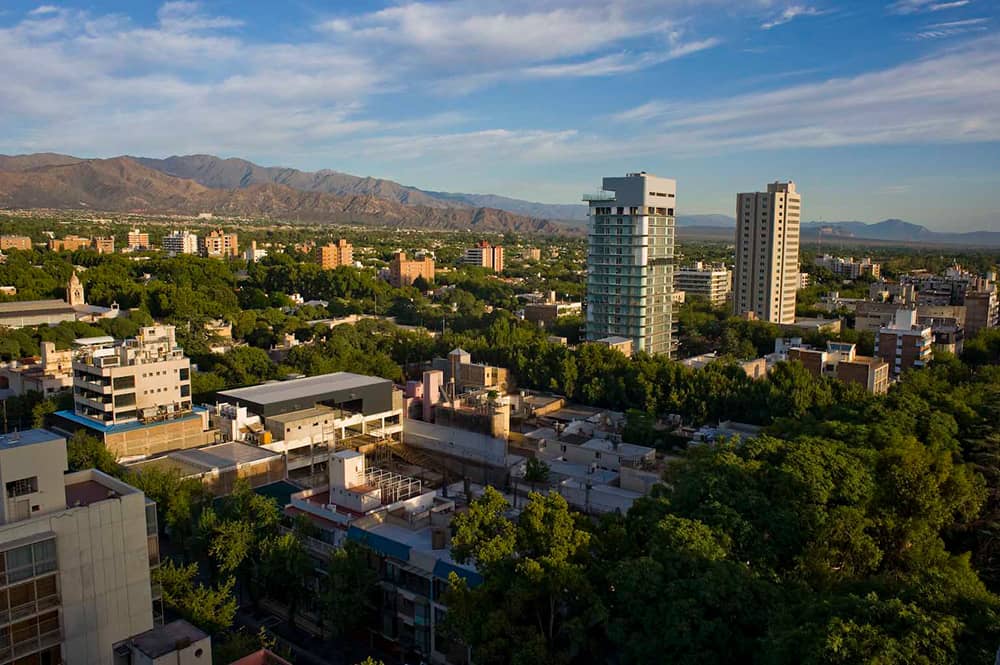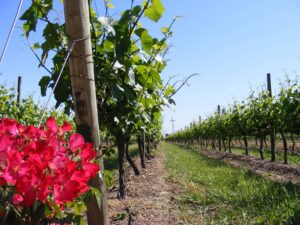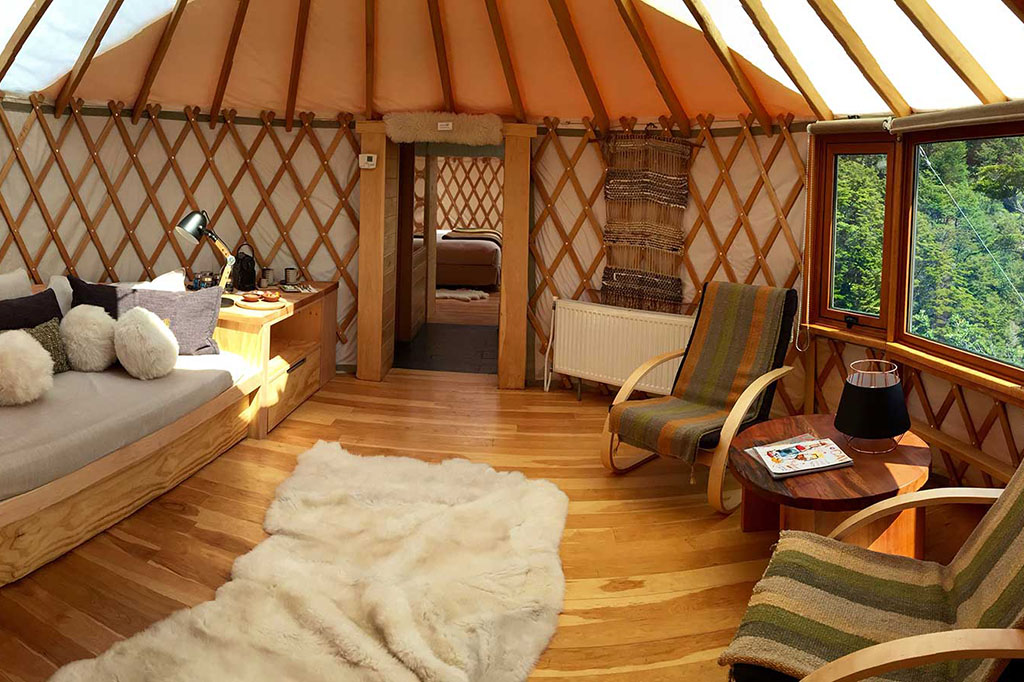Wine Tasting and Tours in and around the Mendoza Wine Region
Introduction
The city of Mendoza is, literally, a “hop” over the Andes mountains from the smaller, Chilean town of Los Andes, and Los Andes is only 78km northeast from Santiago. By road, Mendoza is 293km from Los Andes.
There are three ways to get to Mendoza. One is to drive over the Andes from Santiago. This is a very scenic drive that takes in the beauty of the central sector of the Andes. However, the time involved will add up to around 8hrs, considering the time at each border post as well as navigating roads that ascend and descend steeply as well as numerous curves on the road each side of the Andes.
The other, much quicker option is to fly from Santiago. The actual flight time is a quick 45min, but one should allow for the usual 2hrs pre-flight check-in time at the airport, any flight delays and then collecting luggage upon arrival and passport control, making the total time around 4hrs or so.
Then there is also the option to fly in from Buenos Aires, if you happen to be there.
NOTE: Here at ExperienceChile.Org, we can create an itinerary form you that includes any one of the options mentioned to get to Mendoza as well as linking up a trip to Mendoza from either Buenos Aires and on to Santiago, or the reverse. What is not possible is to take a car rental over the border and leave it in one country or the other. What we will do is arranged terrestrial, private transport each way, or a flight plus local transfers each side of the border.
Also, taking a car over the border will require certain paperwork, which we can arrange of course, but it is yet another thing that is required.
About
Mendoza is one of Argentina’s best wine-producing regions with an excellent reputation for producing Malbec wine. The city is effectively located at the base of the eastern side of the Andes in the rain shadow, therefore there is not a lot of precipitation here. Indeed, the area around the city is like a desert.
The fact that Mendoza is on the eastern side of the high Andes means that the land receives lots of hot, summer sunshine from the early morning all the way through to the point where it “suddenly” sets behind the Andes. On the other hand, the vineyards of Chile must wait a little longer for the sun to show its face in the mornings, but they enjoy a longer “sun set” at the end of the day.
Mendoza city emits a much more “European” style compared to its Chile city cousins just over the border. The city is much more active and larger than Los Andes in Chile and more like a small Santiago in many respects. It has some wide, tree-lined avenues, street cafes and many plazas. There is also a large park to walk within, eat at one of a park few restaurants, ride a bike, jog, even swim in outdoor pools.
If you do visit Mendoza for the wine, obviously you can ignore Mendoza city, but we would suggest you allow for 2 to 3 nights in Mendoza at least and / or consider staying at one of the fine hotels located at some of the wineries for an all-inclusive stay.
The Wine Growing Region
The Mendoza wine-growing region lies on a line of latitude, like “its cousin”, the Casablanca Wine Valley in Chile”, at around 33° south of the equator. Therefore, just by this indicator the daily, summer temperatures are going to be high. And, just like other vineyards at this latitude there needs to be a way to cool down the high, daily temperatures in order to stifle the grape ripening process.
In the case of the Mendoza area the “arrest” (stopping) of the grape maturation process is handled by the cool air dropping down off the Andes after the sun sets as well as the altitude where many of the vines are planted. On the basis that the higher you go, the thinner the air is and therefore the cooler it is, many vineyards have been planted higher up the valley sides to get the benefit of cooler air. This combination, together with the “terroir”, is ideal for the cultivation of certain grape varietals, especially the Malbec grape and Mendoza has gained a reputation for producing top Malbec varietal wine.
In addition to this reality, the wine-growing slopes on the eastern side of the Andes tend to be large in overall area with an incline from the valley floor a lot less in gradient compared the other side of the Andes. In Chile the mountain sides of the Andes have a more dramatic, steep-sided drop down to the lower levels.
The advantage to the wine maker of knowing where the air temperature will be slightly less at a particular altitude enables for a managed control of daytime and night time temperatures, thus allowing for the optimum cultivation of their wine grapes for the result they seek. The end result is a wine that is rich in flavour, a good colour and yet maintaining its acidity ie not sweet.
The Mendoza wine-growing region is the largest in Argentina, providing around 70% of the wine production in the country.
History
The first vines planted in this area date back to the mid-16th Century when the Jesuits came to convert the locals to Christianity. It is reported that the French agronomist, Miguel Aimé Pouget, was the first to introduce the Malbec vine to Mendoza.
Later, in the 1800’s the phylloxera pest decimated grape vines in Europe and so Italian and Spanish immigrants came to Argentina, in part, to cultivate vines not affected by phylloxera pest. However, it was in 1885, when the railway arrived from Buenos Aires when wine production started to boom. For the best part of the 19th and 20th centuries, the wine produced in Argentina was mainly for domestic consumption and it is only, like Chile, since the 1980’s that wine production in Argentina found the export market.
Climate, Weather and Soil
As previously mentioned, vineyard altitude in the Mendoza region is a key ingredient in producing the best wine results. The land covered in vines (as well areas yet to be planted) enjoys an altitude between 800 to 1,200 m above sea level. For comparison, Santiago city is at an altitude between 543m to 800m, therefore the wine-growing area of Mendoza is at a higher altitude than Santiago, and most vineyards in Chile.
Irrigation, where required, is provided by local rivers such as the Mendoza and Tunuyán rivers that run off the Andes.
The soil in this region is a mix of rock, stones and sand, created over thousands, if not millions of years, of natural mountain degradation and water runoff from the Andes. They are not considered to be particularly fertile with little organic matter, but they are free draining and mostly dry. This type of ground means that a grape vine root will need to work into the ground to find moisture and nutrients producing smaller, but more flavour-concentrated grapes. When tasting wines from Mendoza a strong minerality can often be detected and this is a result of the “terroir”, along with strong tannins.
Grapes
Without doubt the Malbec grape is the one that appears to love everything about Mendoza, and therefore Malbec wine from Mendoza is usually excellent. As mentioned in our initial landing page for our wine section, certain wine regions of the world are better at producing particular wine grapes over other regions. For the Malbec varietal, Mendoza appears to be the best place, producing the best Malbec wine.
However, in addition to Malbec you will find Cabernet Sauvignon, Syrah, Torrontés, Chardonnay and Sauvignon Blanc among other varietals being cultivated in the Mendoza region. In addition, of late, sparkling wine is also proving to be a success too.
The Wine Valleys of Mendoza
To date there are 22 sectors in and around Mendoza classified as being wine-producing areas. However, we will focus in only on the better-known ones and these are:
Lujan de Cuyo, Uco Valley and Maipu (not Maipo as in Chile).
The Uco Wine Valley
The Uco valley is about 1hr driving south from Mendoza city. The valley measures approximately 70km in length and 22km in width, following the flow of the Tunuyán river that comes down from the Andes, and this provides an essential source of water for the vines here. Furthermore, within the Uco Valley are the sub wine-growing areas of La Consulta and Tunuyán at altitudes of between 850m and 1,100m above sea level respectively.
In the Uco valley the soil is generally a mix of rock, stones, sand and clay, enabling for a natural drainage of unwanted water. This is one of the optimum combinations of “terroir” for vines to work hard and seek the nutrients they need but produce smaller berries that have higher flavour content.
Malbec has done particularly well in this valley, but Cabernet Franc has also looked to be liking this environment too.
At the higher altitudes the white wine grapes of Chardonnay and Torrontés are also thriving due to the cooler temperatures at the higher altitudes. Remember, the cooler the air temperature allows for a slower ripening period.
As if any proof was needed as to how good the Mendoza area is for wine grape cultivation, wine makers of distinction such as Lurton, Dassault and Rothschild from France’s Bordeaux region have arrived.
Luján de Cuyo
Closer to Mendoza than the Cuyo valley, but still south of the city, is the Luján de Cuyo wine valley. This is home to some of the best-known wine producers in Argentina such as Septima, Cheval des Andes and Catena Zapata.
Historically this wine-producing area was the first one in Argentina to get an official appellation in 1993, which includes the sub wine districts of La Compuertas, Agrelo, Perdriel, Vistalba and Ugarteche.
In this valley the altitude is a little higher than other parts, rising up to 1,000m above sea level and this has a big impact on the grape growing because the air is cooler at the higher altitudes. Cooler air means a slower maturation process.
Like the city of Mendoza, Luján de Cuyo also lies in the rain shadow of the Andes and is therefore mostly dry. It is only the River Mendoza and natural snow melt from the Andes that brings in sufficient water for the vines.
Like the Uco Wine Valley, the soil here is stony, rocky and sandy, meaning that the land is not naturally fertile, but vines are OK with this.
The Maipu Wine Valley (not the Maipo, which is in Chile)
Located on the southern perimeter of Mendoza city, just to the east of the Lujan de Cuyo valley, is the small town of Maipo and the land covered in vines runs from the settlement all the way to the River Mendoza, encapsulating the smaller wine areas of Lunlunta, Coquimbito and Barrancas.
The Maipu valley is an historic wine-growing area producing respected intense, red wines such as Cabernet Sauvignon, Pinot Noir and Malbec.
Very similar to the other wine-producing valleys, the soil is alluvial (stony, rocky, sandy) and at altitude, in this case around 800m above sea level, but the land is mostly flat. However, the cool air from the altitude allows for grape maturation during the hot days to be curtailed with the cool temperatures at night and cold air dropping down off the Andes.
Irrigation is provided by the River Mendoza and snow melt from the Andes too, however, the Maipu valley does not enjoy the plaudits that Uco and Lujan de Cuyo valleys receive for producing quality wine, even though the Maipu does produce good Malbec.
Winery Tours and Tasting
ExperienceChile.Org will be pleased to arrange an itinerary for you in Mendoza in order to either just see the city and / or experience some of the locally-produced wine and visit some wineries.
We can do this either by supplying a car rental from Mendoza airport, or if from Santiago you will need to return to Santiago.
However, the best way to enjoy your time would be to allow us to create an itinerary that includes the transfers you will need either from Mendoza airport or from Santiago.















